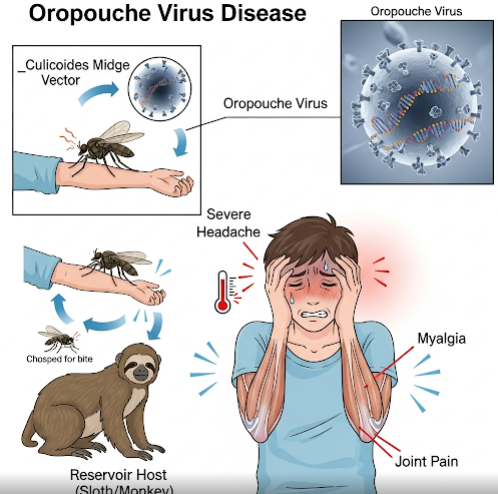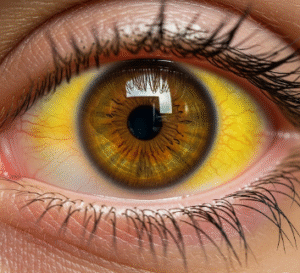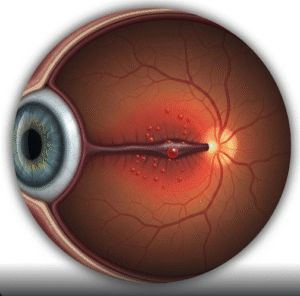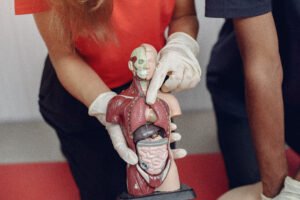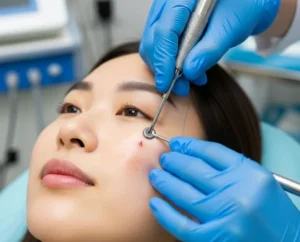Overview
Oropouche Virus Disease is a tropical viral illness caused by the Oropouche virus, primarily transmitted to humans through the bite of infected midges (biting insects). It is a significant cause of febrile illness in parts of Central and South America. The disease is characterized by sudden fever and flu-like symptoms, and while it is usually self-limiting, it can cause outbreaks affecting large populations.
What is Oropouche Virus Disease?
Oropouche Virus Disease is an arboviral infection caused by the Oropouche virus, which belongs to the family Peribunyaviridae. The virus is mainly transmitted by Culicoides midges and occasionally mosquitoes. Humans become infected when bitten by these vectors. The disease manifests with acute fever and neurological symptoms in some cases. It is considered an emerging disease due to increasing reports and outbreaks in tropical regions.
Symptoms
- Sudden onset of high fever
- Headache
- Muscle and joint pain (myalgia and arthralgia)
- Rash (maculopapular)
- Nausea and vomiting
- Dizziness or vertigo
- Photophobia (sensitivity to light)
- In rare cases, meningitis or encephalitis (neurological involvement)
Causes
The cause of Oropouche Virus Disease is infection by the Oropouche virus, transmitted primarily by:
- Culicoides paraensis (biting midges)
- Mosquito species (in some areas)
- Transmission occurs in tropical forested and urban environments where these vectors thrive
Risk Factors
- Living in or traveling to endemic regions of Central and South America
- Exposure to mosquito and midge bites, especially in rural or forested areas
- Lack of protective measures against insect bites
- Seasonal variations with higher incidence during rainy seasons
- Poor vector control programs in affected areas
Complications
Though generally mild, complications can include:
- Neurological involvement such as meningitis or encephalitis
- Prolonged fatigue and weakness after acute illness
- Secondary bacterial infections due to weakened immunity
- Rarely, severe cases leading to hospitalization
Prevention
- Use of insect repellents and protective clothing to avoid bites
- Sleeping under insecticide-treated bed nets
- Vector control programs to reduce midge and mosquito populations
- Avoiding outdoor activities during peak vector activity times
- Public health education in endemic areas
Treatment Option in Korea
While Oropouche Virus Disease is not endemic to Korea, the country’s advanced infectious disease centers are prepared to diagnose and manage imported cases promptly. Treatment is mainly supportive and includes:
- Fever reducers and pain relievers (antipyretics and analgesics)
- Hydration and rest
- Monitoring for neurological symptoms with prompt referral to specialists if needed
- Hospital care for severe cases with neurological involvement
Major hospitals like Seoul National University Hospital, Samsung Medical Center, and Asan Medical Center have infectious disease departments equipped with diagnostic tools and expert care teams. Korea also participates in global infectious disease surveillance, ensuring readiness for emerging diseases.

